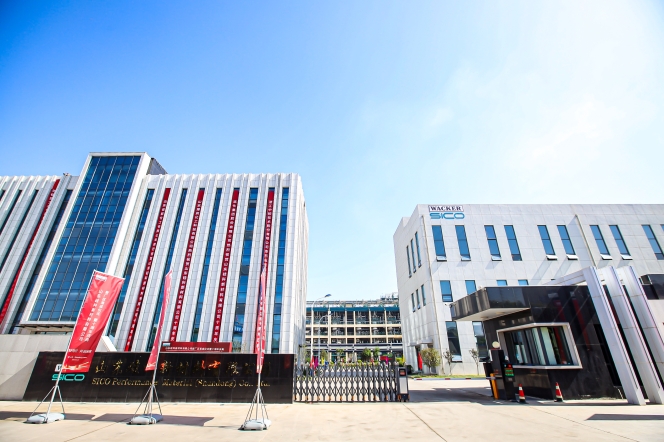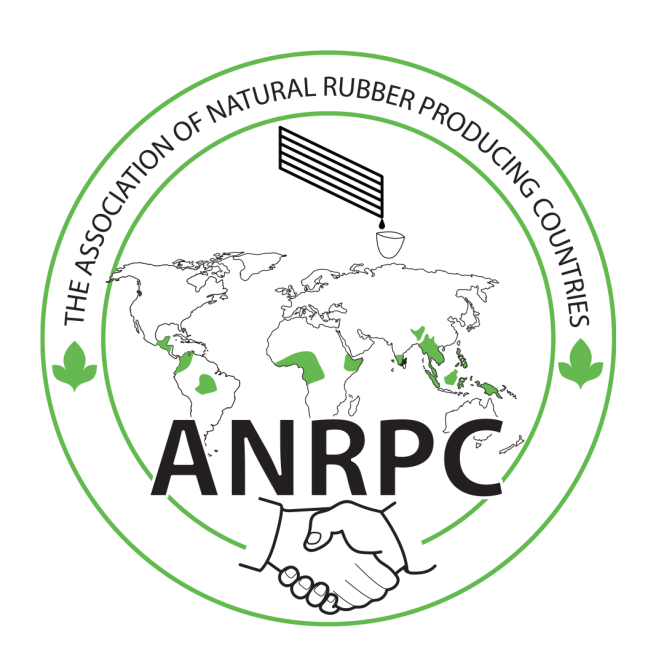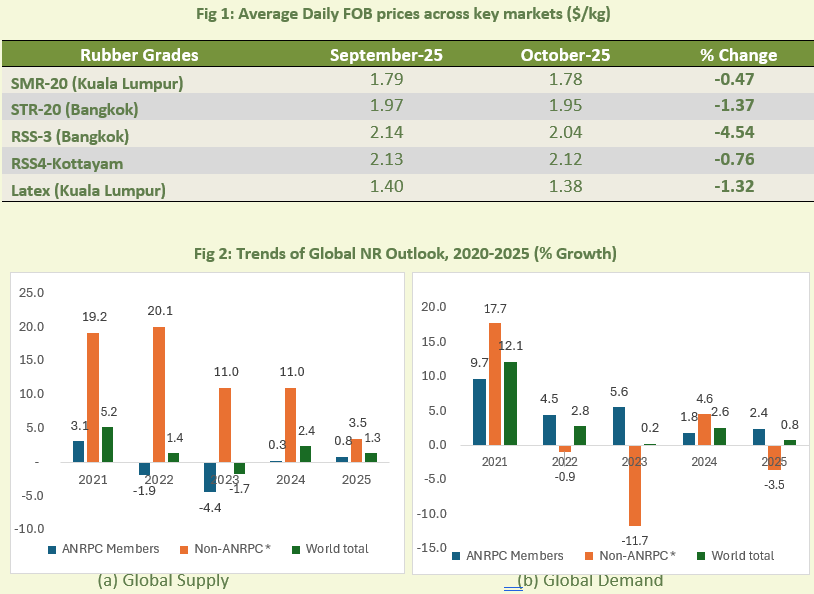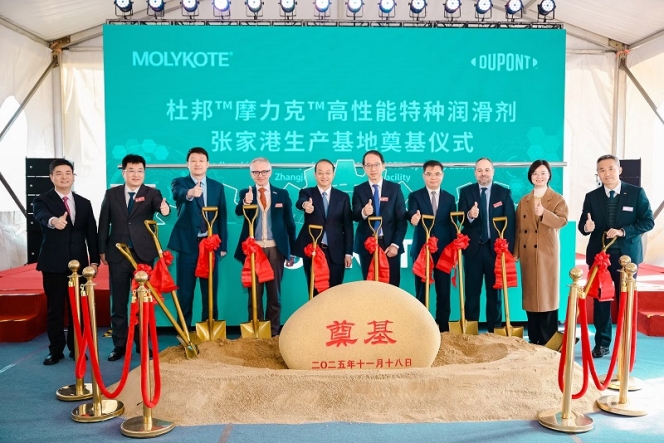THE ANSWER: COLLECTIVE FARMING
- By Dr. Siju T
- October 19, 2020

The state of Kerala in southern India still accounts for over 70% of the tappable area and 75% of the national rubber production in India. Given the agro-climatic advantage, quality of human resources cultivating rubber and productivity of rubber, Kerala is expected to retain its prime position in Natural Rubber production in the near future. Though the area under rubber cultivation is increasing in the non- traditional regions, which has got cost advantages over the traditional region, it has inherent climatic disadvantages. A cost-benefit analysis by RRII revealed higher BCR (Benefit-Cost Ratio) for Kerala than in the non-traditional regions due to its higher productivity which offsets the higher cost in the state to some extent. So, maintaining the production sector in Kerala in good health is key to ensuring sufficient domestic production of rubber in the coming decades as envisaged in the National Rubber Policy (NRP) of India.
The NRP envisages sourcing 70% of India’s requirements of natural rubber through domestic production. This also gains importance as India has once again started thinking in the direction of self-sufficiency through its Atma Nirbhar Bharat initiative and the current domestic production of Natural Rubber accounts for just over 50% of the national requirement.
But the days of the smallholding sector of Kerala, which has scripted the success of rubber production in India from the 1980s onwards, seems to be over and running out of steam. The sector is in deep crisis as it is confronted with issues like uneconomic size of holdings, low price of natural rubber and scarcity of tappers. This paper analyses the persisting issue of scarcity of rubber tappers in the sector.
Widening demand-supply gap
The first census of rubber tappers conducted by Rubber Board in 2013 enumerated 77,207 tappers in the smallholdings sector in Kerala. The estimated tappers requirement to tap the existing tappable area of 4,56,000 ha in Kerala in the smallholdings sector under different systems of tapping is presented in Table 1.

The census revealed that 13.7 per cent (10,577) tappers were under S/2 d1, 81.2 per cent (62,692) were under S/2 d2, 4.7 per cent (3629) under S/2 d3 and 0.4% (309) under various other low frequency tapping (LFT) systems in the smallholdings sector. By assuming a stand of 400 trees per tapping block, these tappers could tap only 1,49,011 ha regularly. This shows there exists huge demand-supply gap of tappers in the sector, resulting in large number of holdings either left untapped or tapped irregularly.
Inherent structural bottlenecks
In the general agricultural sector of Kerala, helpers of masons in the rural construction sector are considered to be the most immediate group with whom agricultural labourers identify or that these segments of rural labour markets interact during short-term fluctuations in the supply and demand. Similarly, supply of tappers at a given point of time is determined to a great extent by the wage income of tappers and the wage rates prevailing in the sectors closely interacted by the tappers in the smallholdings sector. Lower wage income of tappers in relation to wage of agricultural labour and semi-skilled workers was reported as the main reason for aversion of younger generation to tapping job. Trends in the wage rate of tappers in the smallholdings sector of Kerala are presented in Table 2.

Based on the structural breaks observed in the wage rate of rubber tappers since 1980, the entire period was sub-divided into five. During the entire time period, except for the period 2014 to 17, the wage rate of tappers has been increasing in real terms. The highest growth rate in nominal and real wages was observed during 2005 to 2013. A plateau in the growth of nominal wage rate was observed after 2013 and hence the real wage rate showed a decline (Fig 1).

Though wage rate of tappers has been showing growth in nominal and real terms till 2013, the sector has been facing severe scarcity of tappers. This shows that increasing wage rate has not succeeded in attracting sufficient tappers into the sector. Hence, wage share, which is a measure of distribution of income between the capital and labour, was computed to know the distribution of income between the farmers and tappers in the sector. Trends in wage share of rubber tappers in nominal and real terms are presented in Table 3.

The wage share of tappers has increased in the last one decade both in nominal and real terms. Though wage rate of tappers has declined in real terms in the last few years under analysis (Fig 1), wage share has been increasing in the smallholdings sector. Increasing wage share in the sector indicated better distribution of income among the capital and labour.
Nevertheless, the wage rate of tappers, both in nominal and real terms, has been increasing (except for the past a few years) and the sector exhibited an increasing wage share in real terms, the sector failed to attract sufficient tappers, leading to severe scarcity. This warrants for deeper analysis to understand the issue. Hence, a comparison of estimated wage incomes of rubber tappers with agricultural labourers and helpers of masons in the construction sector was done and presented in Table 4.

The estimated annual wage income of rubber tappers in the smallholdings sector of Kerala was found to be 44 per cent and 59 per cent less than their counterparts in the general agriculture and construction sectors respectively. This makes the sector less attractive for the potential new entrants, which is ultimately reflected in tappers supply. Due to division and fragmentation of rubber holdings, the average size of holdings has come down and number of trees available for tapping was only 286 trees per tapping day under single grower dependence system and 75 per cent of tappers in the sector were engaged in the single grower dependence system.
In piece rate-based wage payment system, number of trees tapped per day and number of tapping days per year determines the annual wage income of tappers. Thus, in the present scenario, the smallholdings are incapable of giving more tapping task to the tappers to enhance their wage income. Hence, prevalence of single grower dependence, small size of holdings, lesser number of trees available for tapping per tapping day and the piece rate-based wage payment are the bottlenecks in enhancing wage income of tappers. But, in their effort to retain experienced tappers in the milieu of tappers scarcity, the farmers were forced to follow the labour intensive high frequency tapping systems with more tapping days, though it has implications on net farm income.
Even though the tapping wage rate and wage share has been increasing in real terms, the tappers are expected to demand a hike in the wage rate as the wage income earned by them is substantially lower than their counterparts in other rural employment sectors. In the present scenario, to make wage income of tappers on par with that of agricultural labourers and helpers in the construction sector, a hike of 79 per cent and 143 per cent respectively is required in tapping wage rate (Table 5).

But, an increase of this magnitude in the wage rate is not feasible as further hike in the wage rate would seriously affect sustainability of rubber cultivation as with the present cost of cultivation and price of rubber, the farm income is declining in real terms (Fig. 2) and wage share is increasing (Table 3).

Limited options
Since labour is becoming costlier and farm income has been declining in real terms due to uncertain prices, the options available with smallholdings are either to shift to other profitable crops or adopt cost saving technologies including mechanization as tapping accounts for more than 80 per cent of the labour requirement in mature rubber plantations. Generally, mechanisation is done as a labour saving process that occurs due to the increasing scarcity of labour most often reflected in a rising wage rate. But, since the scope for mechanisation in rubber tapping is limited and adoption of cost saving low frequency tapping (LFT) is constrained by the small size of holdings, farmers may either prefer to keep their plantations untapped or shift to other profitable crops. At present, as per Rubber Board data, around 30 per cent of the mature plantations are left untapped in the smallholdings. This will have serious implications on the rubber smallholdings sector as majority of the farmers are small and marginal with average size of holdings of less than 0.5 ha. A study conducted by the Centre for Development Studies, Thiruvananthapuram, found that the net operating income from an acre of rubber cultivation is only Rs. 16,732 in Kottayam and Rs. 19,681 in Thiruvananthapuram, which is not adequate to induce the rubber growers to continue with rubber cultivation. It was also observed that the recorded net income of those with holding size below 2 ha and depending only on rubber cultivation for their livelihood will be below the poverty line.
Thus, declining profitability is expected to dissuade small growers in Kerala from rubber cultivation and encourage them to explore alternatives. This will have far reaching consequences in the sector as the share of part time farmers are already high and a recent survey by the Economics Division, RRII revealed that for 69 per cent of farmers in Central Kerala, income from rubber accounted for less than 50 per cent of the total household income.
Collapse of the smallholder’s rubber sector in Kerala will have serious impact on natural rubber production in India as the state contributes nearly 78 per cent of total natural rubber produced in the country and the smallholdings sector accounts for nearly 90 per cent of area and production in Kerala.
Collectivism to circumvent the structural bottlenecks
Earlier studies have suggested methods like crop sharing and production incentives with annual compensatory allowances as alternatives to overcome the hurdles inflicted by the piece rate-based wage payment system and low tapping task in enhancing wage income of tappers to attract more tappers into the sector. But, large scale adoptions of these propositions were not reported in Kerala. Crop sharing is not sustainable in the long run as the return to capital is marginal and hence would deter large scale adoption by the small and marginal farmers. Production incentives to match the wage income of tappers to that of labourers in the general agricultural sector and helpers in the construction sector (Table 4 and 5) would render rubber cultivation uneconomical due to high cost of production in the smallholdings, which has long lost its economies of scale.
Prevalence of single grower dependence, small size of holdings and lesser number of trees available for tapping per tapping day being the critical bottlenecks in enhancing wage income of tappers and attract new tappers into the sector, any new system adopted should be capable of negotiating these bottlenecks efficiently to ensure tappers flow into the sector. Division and fragmentation of holdings aggravates these bottlenecks and render rubber cultivation uneconomical. Thus, as a measure to overcome these bottlenecks, collectivism/co-operative farming is suggested as an alternative. Collectivism would help to circumvent these structural bottlenecks of the smallholdings viz., small size of holdings, lesser number of trees available for tapping and prevalence of single grower dependence of tappers, as in collective farming the factors of production are pooled and the farm is managed as a single unit on co-operative basis. Hence under collectivism tapping task and wage income of tappers could be enhanced considerably. Willing farmers in the smallholdings sector can be bought under different farmer’s co-operatives and the farm can be managed as a single unit by professional managers under the supervision of the elected members.

Collective management of small rubber holdings under co-operative/collective farming would facilitate large scale adoption of cost saving technologies like LFT, as the holding size barrier for its adoption could be overcome by collectivism. Since the farm management decisions are implemented uniformly across the units managed under collectivism, it will have the advantage of economies of scale. Though LFT is recommended as a cost saving strategy in mature plantations to make rubber cultivation profitable, its large-scale adoption is constrained by the small size of holdings in the smallholdings sector.
The first census of rubber tappers by Rubber Board in 2013 recorded its adoption as below 5 per cent in Kerala. By following the LFT (S/2 d7) under collective farming, the tapping task and employment of tappers could be enhanced further (Table 6) and the wage income of tappers could be equated with their counterparts in the rural labour market. Table 6 reveals that with the present tapping wage rate itself, the wage income of tappers could be equated with the income earned by their counterparts in the rural economy under collectivism. In addition to higher wage income, the tappers attached to farmer’s co-operatives would have better access to welfare schemes extended for the tappers by the Rubber Board as the first tappers census observed poor percolation of the welfare schemes among the tappers, since the tappers in the smallholdings were unorganized.

The proposed collective farming is different from the activities performed by the Rubber Producers Societies (RPS). The present day RPSs are basically involved in technology dissemination, provide different services like subsidized input distribution, collective processing and marketing of NR. A few RPSs and Rubber Board promoted trading companies are organizing tappers under tappers banks to tap holdings which are either untapped or abandoned due to absentee farmers, non-availability of tappers and declining profitability due to price crash. Though tappers attached to the tappers bank under the present system get higher remuneration than their counterparts in the smallholdings (Table 7), this will not ameliorate tappers scarcity and encourage large scale adoption of LFT in the sector, as the bottlenecks discussed earlier remains.
In the proposed collective farming, farmer’s co-operatives are expected to play a major and direct role in rubber production by pooling the factors of production (plantations). The authority to make farm decisions would be vested with the co-operatives rather than individual farmers and the profit shall be shared among the members.
Conclusion
Though wage rate and wage share has been increasing in real terms in the small holdings sector, the wage income of tappers were substantially lower than the wage income of labourers in the general agricultural sector and helpers in the construction sector with whom tappers in the smallholdings relate in the rural labour market. Due to presence of structural bottlenecks as such as smaller size of holdings, lesser number of tress available for tapping, piece rate wage payment system and prevalence of single grower dependence, the sector was incapacitated to augment wage income of the tappers to equate it with that of labourers in other rural sectors. To attract more tappers into the sector by increasing the wage income of tappers by circumventing the structural bottlenecks, collective farming under farmer’s co-operatives following the principles of collectivism is proposed. Collective management of plantations will not only help the tappers to get regular employment, sufficient tapping task and remunerative wage income, it would also have the added advantage of bring down the cost of production of NR and increasing profitability of NR cultivation as it would also facilitate large scale adoption of labour and cost saving technologies for rubber production.
Flexsys Develops First Viable Industry Alternative to 6PPD in Major Breakthrough for Tyre Chemistry
- By TT News
- December 02, 2025

Flexsys has created what it says is the tyre industry’s first practical and scalable alternative to 6PPD, marking a major step toward replacing a chemical used for decades but now under regulatory pressure.
The company said the new antidegradant is the result of several years of research and testing with federal laboratories, independent scientific groups and tyre makers. Early results show the material could match the performance and safety of 6PPD while avoiding the environmental risks linked to 6PPD-quinone, a transformation product identified in 2020.
Flexsys said the new chemistry provides the short- and long-term protection needed to stop tyres cracking or ageing. It is also designed to fit into existing rubber compounds with minimal changes, which could help manufacturers adopt it quickly. The company added that the product meets environmental and regulatory benchmarks, including criteria set by the Washington State Department of Ecology.
Importantly, the new molecule is not part of the “PPD” family, meaning it does not form quinone during use. Flexsys said this would remove the environmental impact associated with 6PPD-quinone. The company is also using many of the same intermediate chemicals already used in 6PPD production. This could allow manufacturers to rely on existing factory assets and speed the shift to the new technology.
“This achievement reflects our unwavering commitment to responsible innovation, built on decades of expertise in tire protection chemistry,” said Carl Brech, Chief Executive Officer of Flexsys. “Our solution is formulated to deliver the performance and reliability that tire makers expect and is designed for future environmental and regulatory standards.”
6PPD has been essential to tyre durability for 50 years. But studies published in 2020 showed that 6PPD-quinone could harm aquatic species, including coho salmon. Regulators and tyre producers have been looking for a safer option since then. Flexsys said its new antidegradant meets this challenge without reducing tyre safety.
“Our team set out to develop a next-generation antidegradant that meets the tire industry’s highest performance standards without compromising tire safety, while also reducing toxicity,” said Neil Smith, Chief Technology and Sustainability Officer. “I could not be more proud of the perseverance and dedication of the Flexsys R&D team. Our group has been highly motivated by both the technical challenges of this project as well as the positive societal impact that this work will ultimately have.”
Flexsys acknowledged support from the Sustainable Polymers Tech Hub in Akron, Ohio, part of the U.S. EDA Tech Hubs programme.
The company is now working on process optimisation to allow large-scale production. It is also in discussions with regulators around the world to secure approvals for commercial use. Testing with tyre makers is continuing.
“Flexsys is helping set the direction of the tire industry for the coming decades with this development,” Brech said. “We will continue to work tirelessly to bring this breakthrough to the market as soon as possible.”
Wacker, SICO Open China R&D Centre to Speed Rollout of Specialty Silanes
- By TT News
- December 02, 2025

Wacker Chemie AG has strengthened its position in China’s fast-growing market for silicone specialities by opening a new application development centre with joint-venture partner SICO Performance Material in the eastern city of Jining.
The 2,300-square-metre facility brings together several laboratories focused on organofunctional silanes, which are used as high-performance additives in plastics, coatings and adhesives. By locating the centre next to SICO’s production and scale-up lines, Wacker aims to shorten development cycles and move new products into the market more quickly. The companies said investment in the site is in the mid-six-figure euro range.
Tom Koini, who leads Wacker’s silicones division, said the opening marks an important step in its China strategy. “As a provider of innovative silicone specialties and solutions, we can use this development center to achieve a key milestone for our business in China. Our focus is on high-margin specialty silanes, for which demand in China is rising continuously. This investment together with our partner SICO strengthens our presence and commitment to the region,” he said.
Wacker, which took a majority stake in SICO in 2022, is seeking to build a larger share of China’s specialty chemicals market, where demand for hybrid polymers has increased for years. These materials help improve the mechanical and chemical properties of adhesives, sealants, coatings and engineered plastics, all of which are used in sectors such as electric mobility, electronics and power equipment.
At the opening ceremony, SICO General Manager Kevin Qu called the centre an investment in the long term. “We can now pool all of our silane expertise here at our application development centre. This know-how ranges from chemical product properties and supply chain matters through to questions of process engineering and current marketing trends. We will leverage this in-depth knowledge to develop forward-looking innovations for our customers. This marks a new chapter of success in the history of our joint venture,” he said.
The companies said the centre will act as a link between research, technical service and manufacturing teams. Scientists will focus on developing additives, adhesion promoters and stabilisers based on organofunctional silanes and functional silicone fluids.
- Association of Natural Rubber Producing Countries
- ANRPC
- Natural Rubber
- Monthly NR Statistical Report
ANRPC Publishes Monthly NR Statistical Report For October 2025
- By TT News
- November 29, 2025

The Association of Natural Rubber Producing Countries (ANRPC) has released its Monthly NR Statistical Report for October 2025, providing an overview of key developments in the global natural rubber sector.
According to the report, the global natural rubber market in October was characterised by a distinct bearish trend in pricing. This decline can primarily due to a significant surge in production and export activities, which were initially stimulated by the higher prices seen earlier in the year. Meanwhile, overall demand has remained relatively subdued.

Looking ahead to the full year, projections indicate a modest 1.3 percent increase in global production for 2025, a figure that follows a recent downward revision for Indonesia. On the demand side, consumption is anticipated to grow by a slight 0.8 percent, influenced by an upward adjustment to Indonesia's consumption data. Despite the current price pressures, market sentiment shows some mixed signs of improvement, particularly within the tyre trade of certain specific markets.
DuPont Breaks Ground On Major MOLYKOTE Lubricants Plant In China
- By TT News
- November 28, 2025

DuPont commenced construction on a new MOLYKOTE speciality lubricants production facility in Zhangjiagang, Jiangsu Province, East China, on 18 November 2025 with a groundbreaking ceremony that was attended by Senior DuPont leadership from the MOLYKOTE business and the Asia-Pacific region, alongside government officials and key customers. This strategic investment, situated within the Yangtze River International Chemical Industrial Park, is projected to be fully operational by the beginning of 2027. The initiative is a key component of the brand's global expansion, designed to significantly enhance its responsiveness to regional market needs and foster local innovation.
The new plant will primarily focus on meeting the robust and growing demand for advanced lubricant solutions across several critical sectors in China, including transportation, industrial manufacturing, energy and electronics. By establishing a local manufacturing presence, DuPont aims to create a dynamic platform for collaboration with regional customers. This will enable the company to deliver next-generation lubricants with greater speed, precision and agility, ultimately shortening lead times and strengthening supply chains.
The MOLYKOTE brand, with a legacy spanning over 75 years, is globally recognised for its expertise in solving complex lubrication challenges and improving energy efficiency. Its comprehensive product portfolio, which includes greases, oils, anti-friction coatings and pastes, serves the automotive and industrial maintenance, repair and overhaul markets worldwide. Supported by a global network of manufacturing and research facilities, the brand continues to build on its reputation for performance and reliability.
Eugenio Toccalino, Vice President and General Manager, DuPont MOLYKOTE, said, “Today’s groundbreaking is the beginning of a new chapter in our journey to better serve our customers in China, innovate faster and to be a partner of choice for solving wear and friction challenges across industries. This facility will boost local capabilities for application and new formulation development, empowering customer collaboration and response in real time.”
Yi Zhang, Global VP and Regional President, DuPont Asia Pacific, said, “We are thrilled to be breaking ground on the MOLYKOTE China production facility in Zhangjiagang. This manufacturing unit will enable us to address current needs and future trends for speciality lubricants. It reflects our confidence in the long-term potential of customers in China and Asia-Pacific region and reinforces our commitment to deliver faster, more resilient and locally tailored solutions.”







Comments (0)
ADD COMMENT